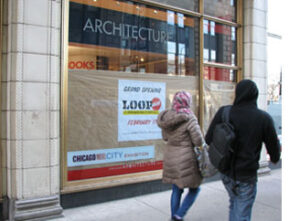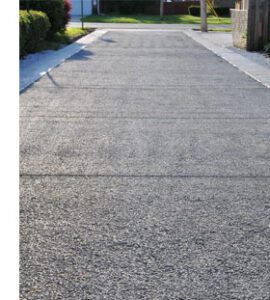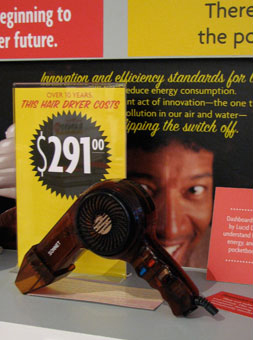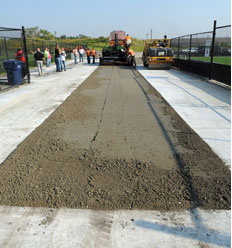Do we truly understand the value of things we buy – and the way our decisions shape the future of our cities and towns?
This is just one of many provocative questions raised by a free public exhibit opening this week at the Chicago Architecture Foundation (CAF).
The Loop Value: How Much Does It Cost? Shop welcomes visitors into what looks like a retail store, complete with departments such as Electronics, Pets and Shoes.
In the Garden Department, “shoppers” encounter an issue they may never have pondered before: what happens to storm water that falls on paved surfaces in our cities and neighborhoods?
A ground-level view

“Chicago has more than 1,900 miles of paved alleys, and when storm runoff goes from these channels into our sewer systems, local waterways suffer,” notes Ingrid Haftel, associate curator of How Much Does It Cost? Shop.
Pervious concrete – which filters storm water and rapidly channels it back into the ground – can be used to rebuild alleys, protecting our water supplies, reducing flood risks and easing stress on wastewater systems, she explains.
Visitors to the exhibit’s Garden Department can see and touch this innovative material, thanks to a sample of StormHandler™ concrete donated by Prairie Material.
From city streets to garden paths

StormHandler has been part of Chicago’s solution for responsible storm water management since 2006, when it was first used to repave sections of municipal alleys. Last month, the Metropolitan Water Reclamation District of Greater Chicago announced that pervious pavement can be used to meet storm water detention requirements in Cook County – a move other water districts may soon follow.
Municipalities near lakes and rivers are using pervious concrete to manage flood risks and keep water supplies clean. Des Plaines, Illinois has approved StormHandler for all future alley reconstruction, citing its value in protecting the nearby Des Plaines River.
Landscape architects and homebuilders use StormHandler for walkways, sports surfaces, patios and much more. Chicago’s Pritzker Park – just blocks away from the CAF exhibit – features plazas and paths made with the material.
The power of choice
Pervious concrete’s value in protecting the environment is just one of the eye-openers in the exhibit.
For example, “shoppers” will learn why the hair dryer they purchase for $21 today will ultimately cost them $291 – and why bottled water costs 2,000 times as much as tap.
“Whether high or low, price tags can hide more than they reveal,” Haftel explains. The How Much Does It Cost? Shop contrasts the “sticker price” with the true environmental, social and economic cost of what we buy and build, she says.
Adds Gregory Dreicer, CAF’s vice president of exhibitions: “We’re encouraging people to ask themselves: what am I willing to pay in order to create livable communities … for myself, my family and my kids?”
The exhibit opens Friday, February 17 in CAF’s ArcelorMittal CitySpace Gallery at 224 South Michigan Avenue, Chicago. Get details here.





 United Materials
United Materials Superior Materials
Superior Materials Prairie Materials
Prairie Materials Canada Building Materials
Canada Building Materials VC Global
VC Global